New Zealander Tex Morton lived a life of breath-taking achievement. He attained fortune and huge international fame in several careers: a recording star (300 songs), singer-songwriter, stage artist (touring sensation in North America, Europe, Australasia), circus entrepreneur, best-selling comic writer, Hollywood screen actor, and with a Doctorate from McGill University, a world authority and renowned performer of hypnotherapy.
He was the top selling recording artist in Australasia in the 1930’s, outselling Bing Crosby, Gracie Fields and the young Frank Sinatra; and in the 1950s was one of the most famous entertainers in North America. His one-man performances took him from Nelson, New Zealand, to Sydney, Darwin, Los Angeles, Vancouver, Montreal, Chicago, Boston, New York, Paris, London, Jamaica, Asia and a thousand points in between. He played with Chet Atkens, Hank Williams, Gene Autry and Floyd Cramer and came into contact with Errol Flynn. In the age before television and constructed media personalities, Tex Morton was pure talent: the entertainer, the real thing.
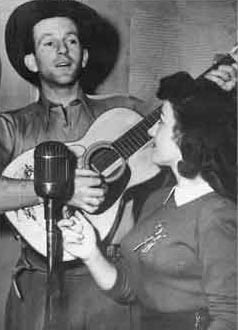
Life on the Lam: Early Struggles
Robert William Lane was born in Nelson, New Zealand, on August 30th 1916. Nelson is the epicentre of the New Zealand Edge – birthplace of atom-splitter Ernest Rutherford, Formula One World Champion Denis Hulme and engineering legend William Hudson. Rocket scientist William Pickering went to school nearby, and American popstar Courtney Love attended Nelson Girls College.
Robert Lane began playing the guitar early, operated pirate broadcasting stations until stopped by the law, and at 14, born to run, left home to launch himself into show business. His first attempt ended in him being found busking by police and he was promptly returned home. He then gained his marksman/sniper badge in the Territorials and by the age of 16 he was playing in a travelling band known as the Gaieties. At this time he made his first recordings – “possibly the first hillbilly and western songs to be recorded outside America” according to the “Guinness Who’s Who of Country Music”. The twenty or so tracks were pressed onto aluminium discs, which could only be played with a hardwood or bamboo thorn needle. They were played extensively on New Zealand radio and are now collectors items.
In 1932 he took a new name, Tex Morton, from a sign seen on a Waihi garage (it was rumoured at the time that he was approached by a member of the local constabulary on the lookout for one ‘Bobby Lane’) and toured the length of New Zealand. At the end of 1932, he departed for better opportunities in Australia. He began as a busker in Sydney with an old suitcase and a battered guitar, but Sydney was experiencing the effects of the Depression and he did not do well. He was forced to find a job – anything on offer. He found work labouring at Luna Park, and on the construction of the Sydney Harbour Bridge. He also sang at showgrounds, outside bars and at race-courses, and did stints as a drover and shearer. He was a strong swimmer and became a member of the Manly and Bondi surf life-saving clubs.
Walk on the Wild Side
Hungry for experience, Morton drifted up to Queensland. For three years he led a rough and tumble life, jumping trains, fighting for scraps of food and sleeping in the open. He worked on various roadshows – as a star boxer, a sideshow motorcycle racer – riding the “wall of death”, and a wild animal tamer.
While constantly wondering where his next meal was coming from, he was never short of a beer. He mixed with the entertainment set: at the Australian Hotel: the famous Skulthorpe family of roughriders, and young actors such as Errol Flynn and Peter Finch. But with all the excitement, the 16-year old was still penniless and hoping for a windfall. With his guitar and swag he made his way to the Northern Territories. He rode the rail to Darwin, but was greeted by a railroad detective, who hauled him before a magistrate. Given the choice of six weeks on a road gang or getting out of town, Morton chose to leave. He was rescued by a rum-running bushranger called Healy and spent the next 18 months getting the feel of the territory.
In 1935 Morton returned to Sydney. As well as joining a circus (by the age of 23, with Lance Skulthorpe Jr, he would have his own travelling cowboy show) he hustled Tim Tyler, the A&R man at Columbia Gramophone Company, for an audition. He persuaded Tyler to give him a break and recorded a song called “You’re going to leave the old home, Jim”, then talked a Sydney radio station into playing it. He won first prize in a 2XY talent quest and recorded eight singles (a few of his own composition) for Columbia Records.
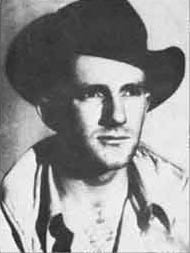 He had personal permission from Banjo Patterson to record some of his works and made the occasional spot as a performer, as well as continuing to busk. It was not enough to keep the wolf from the door, and he hit the road again. He ended up back in New Zealand, broke and disappointed that his four year foray into the Australian entertainment scene had been unsuccessful.
He had personal permission from Banjo Patterson to record some of his works and made the occasional spot as a performer, as well as continuing to busk. It was not enough to keep the wolf from the door, and he hit the road again. He ended up back in New Zealand, broke and disappointed that his four year foray into the Australian entertainment scene had been unsuccessful.
Our First Home Grown Star
In New Zealand, literally singing for his supper, Morton was confronted by the surprise of his life: life size cut-outs of himself in record stores all over the country, promoting “Tex Morton, the Singing Cowboy Sensation”. “Hat on, head back, mouth open, and tonsils showing!” as he described it some years later. His recordings had become a success without his knowledge, topping the charts all over Australia and New Zealand. He found himself an idol, mobbed in the streets from Palmerston North to Perth. Described as “bigger than Sinatra”, his concerts sold out instantly – the first one in Brisbane attracted a crowd of 50,000 people.
The young singer’s years of hoboing, sleeping under bridges, riding on freight trains, performing in circuses and singing in the streets had miraculously paid off. Australian legend Henry “Smoky” Dawson recalls; “When he started it was just like when the Beatles came out. He was a complete novelty. The country just went crazy.” A Melbourne charity group ran a competition: Tex Morton versus Bing Crosby. The fans of each lined coins along the street to see which trail would reach the farthest. Tex Morton won easily.
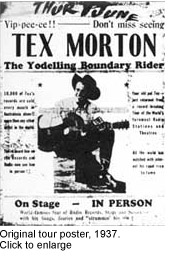 During the mid to late 30’s, Morton flourished as a recording star, a public speaker, and radio wit. Extremely prolific, he recorded 18 singles in 1936, 16 in 1937, 18 in 1938 and 16 in 1939. He took time to polish his marksmanship skills with Lionel Bibby, the Australian-born world champion marksman, developing his talent to the stage where he consistently defeated Bibby.
During the mid to late 30’s, Morton flourished as a recording star, a public speaker, and radio wit. Extremely prolific, he recorded 18 singles in 1936, 16 in 1937, 18 in 1938 and 16 in 1939. He took time to polish his marksmanship skills with Lionel Bibby, the Australian-born world champion marksman, developing his talent to the stage where he consistently defeated Bibby.
He married Marjorie Brisbane and they had twin sons, but the call of the road and the life of the travelling player was too strong for Morton, and they later parted.
A tireless performer, Morton toured with a group of actors, among them later legends such as Chips Rafferty and Errol Flynn. He also joined up with the Skulthorpes circus family in the late 30s to create a combined circus, rodeo, and singing show. It was the biggest roadshow in Australia – 100 employees traversing the continent, in a convoy of over 20 caravans and trailers and was a best-selling touring extavaganza. It was common for fans to follow the show for several days – driving countless miles each day and returning home to their farms in between for milking and other work.
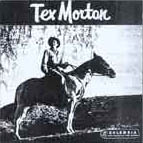 Distinct Style
Distinct Style
Morton’s early recordings had been strongly influenced by American styles, particularly by the magic of the cinema where every week Hollywood westerns beamed mythological images of cowboys onto local movie screens. The same images were perpetrated by the American radio stars, including the singing cowboy Gene Autry and Jimmie Rodgers. In the only two songs that remain of a 1937 recording that Morton did for the Macquarie Broadcasting Network, he sings in a phony American accent and serenades the Blue Ridge Mountains in Wyoming Texas.
Later, his writing matured to a distinctively Antipodean sound. Lyrics reflected much of the harsher side of Australian life during the Depression years, with titles like “Yodelling Bagman”, “Wrap Me Up in my Stockwhip and Blanket”, and “Hallelujah, I’m a Bum”. Many of his songs paid homage to Australian legends such as Ned Kelly.
But Morton’s sound was developing its own distinct context to the extend that Slim Dusty, Australia’s present day legend of country music, would later proclaim, “Tex’s early songs laid a foundation for a lot of us to follow”. He was friend and defender of the Aborigines and many of them still sing songs of his such as “The Creamy”, about the child of a white man and an Aboriginal girl. In his shows he had songs about Maori tohunga and Aboriginal mystics. He was fascinated by dreamtime (at numerous times in his life he would pursue his own ‘walkabout’), by American Indian legends and by stories of voodoo from the Caribbean (leads he would explore in Jamaica when he later toured there).
Some of his most famous tracks were controversial and dealt with his earlier experiences (and those familiar to many of his fans) such as a “boundary-rider”, or hitching free rides on the trains. The most notable, “Sergeant Small”, about a ruthless Queensland policeman who tracked down fare evaders, was withdrawn from sale in Australia because of the subject matter, making it possibly the first banned Australian disc ever. The chorus contained the immortal couplet:
I wish I was about twenty stone only seven feet tall
I’d go back to Western Queensland and beat up Sergeant Small
Another song, “Travel by Train”, captured the same subject and established the authenticity of Morton’s experience.
The Bugsy from Down Under
Morton was instrumental in the establishment of Surfer’s Paradise, Queensland, Australia. A good mate, Bob Gerrahty, was a professional pianist, but his band went broke and Gerrahty took work as a resident pianist in the Surfer’s Hotel, then an area of tidal mangrove swamps. Inspired by his vision to develop the coast, Morton substantially financed Gerrahty, who got working plans from Canada for draining swampland. The first marina sale financed work on the next and so on – eventually becoming Australia’s version of the dream in the desert: Las Vegas on the Gold Coast. Gerrahty died a multi-millionaire with, as Morton said, “a huge smile of his face”.
During World War II, petrol rationing put Morton’s Wild West Circus Rodeo off the road, so he toured military camps with concert parties and entertained the troops instead. In 1941, at the peak of his career, Morton stopped recording. The reasons are vague, but are most likely due to wartime economics and his loyalty to his band rather than the solo acoustic guitar format that his recording company demanded. Although out of the musical eye, he didn’t languish in obscurity and after the war he reformed the road show and published a series of comics, “Tex Morton’s Wild West Comic” (illustrated by one of Australia’s greatest cartoonists Dan Russell), which reached circulation reached 100,000 a month in Australia and New Zealand.

In 1948 his music career was resurrected when his previously phenomenal record sales brought him to the attention of American record publisher Ralph Peer I. Peer couldn’t believe that Morton not only topped the country charts, but regularly topped the combined sales of all Australian artists in all fields outselling Bing Crosby, Gracie Fields, Frank Sinatra and Al Jolson. Peer became Morton’s manager persuaded him to tour again and to write and record new material. After a burst of successful touring through New Zealand and some frenzied recording, Morton set off for America in 1949.
The Great Morton – A North American Sensation
He arrived in America and immediately fell in love with the place. He was met at the airport by showbiz legend Gene Autry and driven by limousine to Peer’s mansion in Hollywood. He mingled with the greats of American country music, “millionaires by the dozen” he later recalled, “and of course they took it for granted that I was one too. I’m not exactly certain, but I think I liked it for a while.” Morton had a fondness for Cadillacs and toured in a customised fleet. One story has it that Autry, Morton and the boxer, Maxie Rosenberg, once checked into a New York hotel and asked the Cadillac company to deliver six limousines. From their window they chose the models they wanted. Gene got the blue one. Slapsie Maxie chose red and Morton bought the black one. Of course it was sheer coincidence that the black is the colour that infuses the edge. “They’re the only car,” he said, “that can stand up to the touring”. Morton’s lifestyle of swinging affluence was brought to an abrupt end when he was targeted by the US immigration authorities and given 24 hours to leave the country.
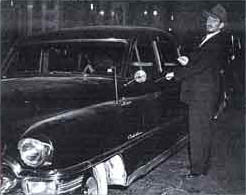
Big Tex and one of the famous customised Cadillacs.
Forced north to Canada, Morton put together a one-man show predominantly of sharpshooting, hypnotism, poetry reading, whip cracking, mind-reading and magic, travelling under the moniker “The Great Morton”. There was no singing, as the Australasian flavour of his songs was foreign to North American ears.
“To Hell with Hollywood” crowed Morton, “what’s the next town called?”. As music historian Gordon Spittle notes in “Counting the Beat”, Morton’s shows set box office records, first in Canada, where he outsold “South Pacific” during a run in Toronto, then (allowed back in the States) in Boston and St Louis. A photograph from the period, shows a queue stretching round the block for Morton’s show in Montreal – and this was after he had been doing five shows a day for 20 weeks.
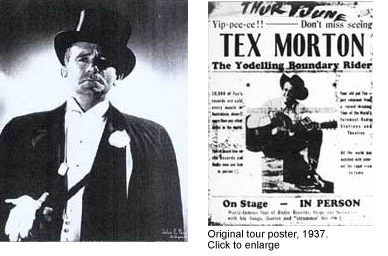
“You will believe”: The Great Morton. Click for an enlargement of the Poster
For Morton it was the beginning of a decade-long odyssey from Alaska to Jamaica. He became a legend in the process – side-splittingly funny and a daredevil to boot, famous for his publicity stunt of walking blindfolded on the parapet of the tallest building in every town he played. His aim was as sharp as his stage monologues: his sister Barbara, who worked on the show in Canada, remembers him shooting a five cent piece held between an assistant’s fingers, shooting cigarettes out of the mouths of girls with his .22 rifle, and firing a live bullet across a stage to split a playing card in two.
He became one of the highest paid touring entertainers in North America. He took his act to England, France and other parts of Europe where he enjoyed similar popularity. The Saturday Evening Post named The Great Morton the greatest hypnotist of all time and the world’s best sharpshooter. Singing his bush ballads, he twice played to full houses in Carnegie Hall, and in one early 1950’s trip, toured Canada to earnings of US$250,000 for a six-week solo tour.
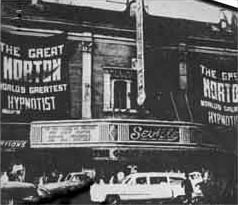
Morton was also contracted by the FBI and US Police training academies to demonstrate his marksmanship skills covering the quick-draw, safety measures, and accuracy.
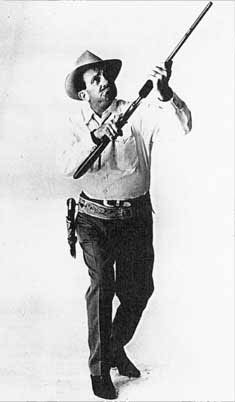
The consummate all-rounder, Morton fitted in six months opening for Hank Williams and worked as a character actor in Hollywood. In 1953 he added to his vast repertoire of songs on disc by recording with guitarist Chet Atkins and his band members Floyd Cramer, Tommy Jackson and Jerry Byrd). The tracks included his own compositions and the album, recorded in the famous studios at the Tulane Hotek in Nashville, found its way to Australia as “The Tex Morton Story”.
New Horizons: “The Drinks Are On Me”
Morton was never in it for the money. Explaining his theory of economics he said:
“I’ve made a mint of money over the years and either spent it, lost it or given it away… I couldn’t think of a better way to use it.”
He became a figure of urban folklore by laying a suitcase bulging with banknotes on the bar at Sydney’s Albury Hotel and inviting patrons to take what they needed. This was repeated in country areas on several occasions. Another legend has it that Morton and some friends took to sprinkling money like 4th of July confetti from the upper floor of a well-known New York hotel.
The one-man sensation could have carried on as he was, touring North America and working in Hollywood, but his omnivorous mind needed a new outlet. He developed an interest in hypnotherapy and the paranormal by studying at UCLA and other universities, gaining a BA in parapsychology. He went on to gain a doctorate at McGill University in Montreal (where fellow Nelsonian, Ernest Rutherford, had been Professor of Physics from 1898 to 1907) and became a world authority on hypnotherapy. Morton started a private hypnotherapy clinic in Toronto, but was soon made restless through being tied to a regular day job. Afflicted by wanderlust, he hit the road again, this time as “The Great Dr Robert Morton – the World’s Greatest Hypnotist”.
The Times They Are A-Changin’
Morton returned to Sydney in 1959 after ten years in North America. He went back on tour, but the advent of television had cut down the audience for the style of entertainment that had made him a sensation a decade earlier. Especially in the rural areas the guitar pick was losing out to the pixel.
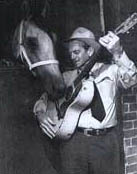 Booker prize-winning author David Malouf, writing about Australian consciousness at the time, regards it as a time of change,
Booker prize-winning author David Malouf, writing about Australian consciousness at the time, regards it as a time of change,
“It was the last time, too, when most shared the same cultural values; that is, there was no significant divide between low and high culture, and none certainly between youth culture and the rest … At sixteen, as I was in 1950, I could mix Tex Morton, big band jazz, and Gladys Moncrieff in ‘rio Rita’ with the Top Twenty, the Amateur Hour, the Lux Radio Theatre, the Borovanski Ballet, the surf every weekend, and the last episodes of “The Search for the Golden Boomerang” – all with no sense that I was doing anything but responding to what interested and amused me.”
As Malouf goes on to write, it was a dying era and the nostalgia was double-sided: society was changing, becoming urban and anxious. For Morton, this meant a ‘walkabout’. He spent a few years touring Asia playing American Army bases. Then, in the 60s, he made a sentimental journey to the Australian outback, taking his two-way shortwave radio and travelling in a station wagon with three companions – a cat, a terrier and a magpie.
Tex Morton was a lifelong amateur radio aficionado, broadcasting as VK2AHZ and VE2AHZ (Canada). His ham radio call sign was well known to much of the US Navy as he never missed monitoring the astronaut recovery missions. US Navy members were encouraged to operate personal side band sets at sea, and on returning to earth were often given a taste of the ‘tex stuff’.
In 1967 he returned to New Zealand and for three years hosted the top-rating television show “Country Touch”. Trying unsuccessfully to lose the tag ‘Tex’, Robert Morton subsequently became a frequent actor on Australian television and earned a reputation as one of Australia’s best character actors with roles like the prison governor in Stir and the crooked politician in Goodbye Paradise. He continued to write and record songs, recording two EPs and the “Tex Morton Today” album.
The Living Legend
In 1973, Morton’s single about a racehorse “The Goondiwindi Grey” reached the top three in the Australian charts and Tex was a national star once more. In all, his recording career spanned over four decades, from his early recordings in 1932, his first hit in 1936 through to his biggest hits “Click go the Shears” and “I’d love to have a beer with Duncan”, in the mid-60s.

Morton was the first popular music sensation to come from the edge and to promote a distinctively antipodean persona. He was a prolific recording artist, with over 300 songs on disc, around 100 of them his own compositions. In 1981, Festival Records released a selection of the best in the album “Tex Morton with Sister Dorrie – You and My Old Guitar”. An early selection of his very first Regal Zonophone 78s has been re-released on tape, Vinyl and Compact Disc by EMI.
He was the first person to be elected to the Australian Country Music Roll of Renown, and his status in any history of antipodean music is iconic. Well-known ABC radio presenter John Nutting has expressed a longing to turn back time, “so that I could hear live Tex Morton, Patsy Cline and Elvis”. Acclaimed country music star Lee Kernaghan, as part of the hugely successful “Pass the Hat around Australia” fundraising tour, recorded an album of tribute songs to the pioneers of Australian country music, Morton, Buddy Williams and Slim Dusty.
On the cover of the the 1988 Roaring Days album by enduringly popular Melbourne band “Weddings, Parties, Anything” there is a collage that has Tex Morton and Australian bush poet Henry Lawson sitting at a bar, with a tattered Morton songbook, a glass of beer, and a butt-laden ashtray. The album opens to reveal another collage of the two, now sharing the bar with Brendan Behan and Punch, while a Broken Hill miner stands in the background. Of the songs on the Aria winning album there is a cover of “Sergeant Small”, as well as a tribute by lead singer Mike Thomas to Morton’s influence on him:
Ain’t it funny how time passes
How the years just slip away,
And the memories we have, they play their games.
And now it’s me who’s strumming guitars,
Now it’s me who’s travellin’ round,
But somehow I get the feeling that it isn’t quite the same.
For it was never quite this easy,
It was never quite this hard,
But it never made much sense to theorize.
Country music is characterised by gems of home-spun wisdom, and Morton, the yodelling boundary rider with a doctorate from McGill, had his own particular theory to deliver, guitar in hand: “It is remarkable how often, when push finally comes to shove, the black sheep of the family turns out to be the sons with the hearts of genuine, twenty four carat gold.” One of the first articulations of the edge?
Tex Morton died in 1983, aged 67, with his longtime companion Kathleen at his side. He was buried in Nelson, alongside his parents. At the funeral, actor and friend Tony Barry said of the edge bard something that should be stamped in the passport of every New Zealander embarking on their ‘Overseas Experience’: “He came across in 1932 looking for gold. What he didn’t realise was he brought it with him.”
Tex Morton’s headstone is inscribed with his own description of himself: “A millionaire in the experience of life”.
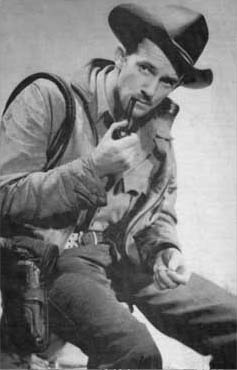
Our sincere thanks to Tex Morton’s sister and brother, Barbara and Kim Lane of Nelson, and Graham Archer, for their assistance with this story and photo permission.
Video Feature:
The Last Ride of Tex Morton (The Father of Australian Country Music) was launched in Tamworth, Australia, in January 2001 during the country music festival. The documentary traces the story of the young Morton from Nelson and follows the adventures of his career through to his death in 1983. It includes the voice of Tex telling his own story with anecdotes from country artists and management, and concert performances including rare footage and photographs. Produced, written and directed by:
Graham Archer
Attitude Productions Australia
PO Box 233U, Darwin, NT 0815, Australia,
Ph: +61 (419) 817 215,
Fax: +61 (8) 8928 0767,
Email: attitude.aust@austarnet.com.au
See also:
http://www.centenary.gov.au/happen/199912.htm
[Assessed 2002. No longer active 2006]
References:
Album: showcasing the ‘best of’ recordings and featuring extensive sleeve notes:
“Tex Morton with Sister Dorrie – You and My Old Guitar”, The Original Tasman/Rodeo Recordings, New Zealand, 1949, re-released by Festival Records Pty, Australia, 1981
Articles:
Spittle, Gordon. (1997) “The world’s greatest hypnotist”, in Counting the Beat: A History of New Zealand Song, GP Publications, 1997, ps.11-15
Spittle, Gordon. (1996) “When Tex Morton stopped still”, New Zealand Musician, December 1995-January 1996
Turley, Alan. (1996) “Tex Morton”, Nelson Historical Society Journal, 1996
Baysting, Arthur. (1984) “So long Tex Morton”, Australian Performing Right Association, p.38-9
http://www.apra.com.au/
[Assessed 2002. No longer active 2006]
Mitchell, David. (1983) “Tex Morton – much more than a country singer”, Nelson Evening Mail, August 20
(1983) “Tex Morton dies”, Nelson Evening Mail, July 25
Atkinson, Bill. “The Life Story of the Late Great Tex Morton”, Nelson, Unpublished story.
Smith, Andrew. “Cowboys and Hillbillies Down Under: The First Wave of Australian Country Music”, USA, Magazine unknown.
Web:
“Tex will forever be remembered as the father of Australian country music”, on the tribute page of the Country Music Association of Australia website.
http://www.countrymusic.asn.au/tributes.html
[Accessed March 2002; No longer active October 2006]
Australian Country Music Foundation Roll of Renown:
http://www.acmf.org.au/rollofrenown.html
[Accessed March 2002]
For the only other tribute page on the web, see the webpage of Singapore biochemist Wayne Forday and download the half dozen or so audio files of Tex Morton’s greatest songs:
http://www.geocities.com/Heartland/Estates/3156/tex.htm
[Accessed June 2000; No longer active October 2006]
Order page for back issues of Country Music People, an American magazine that profiled Morton, Vol. 22- 1991:
http://www.countrymusicpeople.com/back_issues.html
[Accessed June 2000]
“The Big Golden Guitar”, a gallery saluting the pioneers and stars of Australian Country Music:
http://www.big.goldenguitar.com.au/
[Accessed June 2000]
Site surveying the history of Australian Rock ‘n’ roll:
http://www.ozstar.com/
[Accessed June 2000]
Booker Prize winning novelist David Malouf talks about the part Morton played in his cultural experience in 1950’s Australia, in “The making of Australian Consciousness” (1988):
http://www.abc.net.au/rn/boyers/98boyer5.htm
[Accessed June 2000]
Exhibition featuring “Tex Morton’s Wild West Comic”, from the State Library of Victoria Exhibition:
http://www.slv.vic.gov.au/slv/exhibitions/comics/cat1.html
[Accessed June 2000; No longer active October 2006]
A fundraising album of Tex Morton and Buddy Williams tribute songs has been released by top-selling singer Lee Kernaghan “Pass the Hat around Australia” was released in January 2000:
http://www.passthehat.bigpond.com/
[Accessed June 2000; No longer active October 2006]
Website for the band “Weddings, Parties, Anything”: The famous battered Tex Morton songbook, described in the main text, is shown on the cover below:
http://www.mira.net/wpa/WPA2.html
[Accessed June 2000; No longer active October 2006]


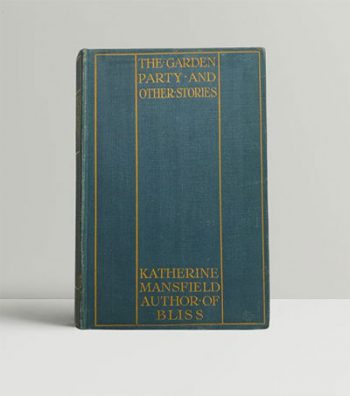




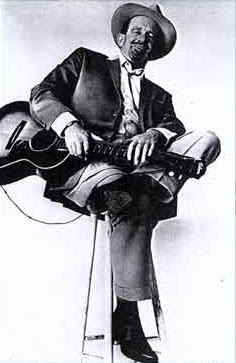





Hi we have a Tex Morton white guitar in it's original case. He donated it to the Old time country awards in New Zealand in 1983 and the last name on it was 1996. We won it at a auction and would love to know its value
Well I will be. I only just read the Morton story. What a story. My mother tells me that his sister was a midwife. And midwife for my mother . when I came in to this world.
nothing about his twin sons Bernard and Robert , Robert continues his fathers musical story with several well known bands ...the latest in W.A called hometowncountryrock
Hi, I have a Tex Morton " 100 Buck " bank note. This was not official Australian currency but obviously a promotional item.
You have broken or missing links to your pictures
fantastic website..i am trying to find as many songs as i can and put them on Youtube ..I have found a List of over 100 Radio Transcriptions supposedly Recorded in 1942 but can't find any trace on any cd of these Recordings ...Anyone know about these Recordings..Cheers Dave from Melbourne
For the reason that the admin of this web site is working, no hesitation very soon it will be famous, due to its quality contents.
Thank you for an illuminating article about a quite incredible New Zealander, it's certainly opened up my eyes. As a kid growing up in NZ in the 1960s and 70s I was familiar with Tex Morton's appearances on various TV shows, and while I enjoyed one or two of his songs, I wasn't really all that impressed by the man as an entertainer. In my ignorant young eyes, Tex, with his pencil moustache and cowboy outfits, seemed a throwback to an earlier generation, and an unexciting one at that. In fact, I felt he was a bogus C&W exponent, for he wasn't even the real McCoy, an American. In those times the only music I wished to devote my listening time to was that provided by the long-haired lads in the pop and rock bands of the US and the UK. But having read about Tex's life on this webpage I feel ashamed to think I wrote off this incredible man and acclaimed entertainer with such a narrow view. What a career the man had, and what an absorbing, extraordinary life, crammed full of all manner of things and experiences. My mind boggled as I read of his formidable string of exploits, on the stage and off. Now I intend to set about rediscovering his music and, hopefully, learning even more of his gripping life story. Tex, my apologies, pardner. You're a genuine legend. I just wish I'd found that out many years ago. Higher trails!
Thank you for posting this wonderful description of "The Great Morton". In 1953, in Moncton, New Brunswick, Canada, Dr Morton hypnotized my sister and presented her as "The Sleeping Beauty", in a demonstration of his many talents, which he dazzled his audience with that evening. There are not many people today, that could be cut from such humble cloth, and go on to "pick himself up by the boot-straps", and give so much of himself, to so many people. He was truly a man of the people. Richard, Retired Picton, Ontario
I met Tex Morton in Wellington, New Zealand a few years ago now. We were talking in a restaurant about his life and he showed me his muscular forearms which he said he got from Blade shearing sheep. I saw his show in Hastings, NZ some time before that. The other night on the radio I heard him singing the song, The Carriage Ahead, and wonder if I can get a copy of this song. I cannot see it on the Internet anywhere. I thank you. Mal Retired Maryborough, Australia
I am Uncle Bob's Niece (sorry Tex Morton's niece). By doing this website you have done my family and I proud. I show my children and let them know about Uncle Bob as I was young when he died. This website more or less tells it all and I am grateful for that as he was a wonderful man and I miss his smile and songs as I remember as a little girl. Once again thank you for all that has been done on this website. Kind Regards Naomi Dean (nee Lane).
I received an e-mail with information regarding your website. I must say, I think it is fantastic, particularly the piece on Tex Morton - I actually toured and worked with Tex in New Zealand. I am looking forward to a biography on my personal hero, Franquin. Tom Orchard (Orchante), Entertainer Retired, Doncaster, UK